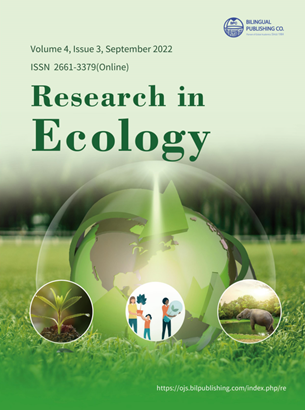
Environmental Education and Ecotourists: Experience from the Yucatan Coast, Mexico
DOI:
https://doi.org/10.30564/re.v4i3.4630Abstract
Ecotourism is a tourism modality intricately linked to the principles of sustainability, due to its natural offer component and environmental education. The objective of this research is to evaluate the perception of ecotourists present on the coast of Yucatan. From a regional approach, the author selected twenty-five community-based ecotourism ventures (CBET) present in the area and analysed the perception of ecotourists through a questionnaire and its respective statistical analysis with nonparametric tests, and developed a general profile of the ecotourist applying a sociodemographic segmentation and based on a geographical segmentation the author compared the perceptions of two populations: national ecotourists and international ecotourists. The data reveal that the profile of the ecotourist on the coast of Yucatan is similar to that postulated in the literature. In terms of environmental perception the author found a significant difference in both populations, and believed that this difference is because the international market is more critical and demanding. In addition, areas of opportunity were documented in the CBETs in the way they carry out their environmental communication. The author concluded that ecotourism in the region is still an activity in consolidation and although it presents great achievements. It is still not possible to qualify it as a sustainable activity. We call for continuing deepening the studies of ecotourism demand and evaluation of perception, through comparative, longitudinal studies and with new variables that allow new test statistics, to contribute new elements to the ecotourism debate.
Keywords:
Ecotourism; Community-based venture; Ecotourist typologies; Conservation; Mangrove; YucatanReferences
[1] Ceballos-Lascurain, H., 1987. The future of ecotourism. Mexico Journal. (17), 13–14.
[2] Ojeda, A.B., et al., 2020. Ecotourism as a conservation tool in coastal wetlands of Yucatan, Mexico. Revista Cartográfica. (101), 155–171. DOI: https://doi.org/10.35424/rcarto.v0i101.671
[3] Singh, S., 2021. ‘Quixotic’ tourism? Safety, ease, and heritage in post-COVID world tourism. Journal of Heritage Tourism. 16(6), 716–721. DOI: https://doi.org/10.1080/1743873X.2020.1835924
[4] Drumm, A., Moore, A., 2002. An Introduction to Ecotourism Planning. Arlington, VA: The Nature Conservancy.
[5] Cheia, G., 2013. Ecotourism: Definition and Concepts. Revista de Turism. (15), 56–60.
[6] Kimmel, J.R., 1999. Ecotourism as Environmental Learning. The Journal of Environmental Education. 30(2), 40–44.
[7] Weaver, D., 2002. Hard-core Ecotourists in Lamington National Park, Australia. Journal of Ecotourism. 1(1), 19–35. DOI: https://doi.org/10.1080/14724040208668110
[8] Perkins, H.E., Brown, P.R., 2012. Environmental Values and the So-Called True Ecotourist. Journal of Travel Research. 51(6), 793–803. DOI: https://doi.org/10.1177/0047287512451133
[9] Bluwstein, J., 2017. Creating ecotourism territories: Environmentalities in Tanzania’s community-based conservation. Geoforum. 83, 101–113. DOI: https://doi.org/10.1016/j.geoforum.2017.04.009
[10] Hvenegaard, G.T., 2002. Using tourist typologies for ecotourism research. Journal of Ecotourism. 1(1), 7–18. DOI: https://doi.org/10.1080/14724040208668109
[11] Brown, K., et al., 1997. Environmental carrying capacity and tourism development in the Maldives and Nepal. Environmental Conservation. 24(4), 316–325. DOI: https://doi.org/10.1017/S0376892997000428
[12] Blangy, S., Mehta, H., 2006. Ecotourism and ecological restoration. Journal for Nature Conservation. 14(3–4), 233–236.
[13] Blamey, R.K., 2001. Principles of Ecotourism. Weaver D, ed. The Encyclopedia of Ecotourism. Wallingford, UK: CABI.
[14] Swarbrooke, J., Horner, S., 2007. Consumer behaviour in tourism., Second Edition. Amsterdam: Elsevier.
[15] INEGI, 2020. 14th Population and housing census in Mexico. Aguascalientes: INEGI.
[16] Euan, J., et al., 2014. Biophysical characteristics of the coastline. Euan, J. et al., eds. The coast of the state of Yucatan. Reflections about the society-nature relationship, in the context of its territorial ecological planning, Merida: Plaza y Valdes Ed.
[17] Flores, J., et al., 2010. Terrestrial plants communities. Duran R, Mendez M, eds. Biodiversity and Human Development in Yucatan. Merida: CICY, PPDFMAM, CONABIO, SEDUMA.
[18] Ojeda, A.B., Rivera, T., 2015. Alternative tourism and conservation. García de Fuentes A et al., eds. Atlas of alternative tourism in the Yucatan Peninsula. Mexico City: CINVESTAV - UADY.
[19] Zaldivar-Jimenez, M.A., Herrera-Silveira, J.A., Teutli-Hernandez, C., et al., 2010. Conceptual framework for mangrove restoration in the Yucatán Peninsula. Ecological Restoration. 28(3), 333–342.
[20] Pinkus-Rendon, M.J., 2017. Challenges, opportunities, and failures of ecotourism. Ría Ceslestún Biosphere Reserve, Mexico. Merida: UNAM/UADY.
[21] Ceballos-Lascurain, H., 1996. Tourism, Ecotourism and Protected Areas. Gland, Switzerland: UICN.
[22] Barragan Ojeda, J.A., 2015. Environmental practices of ecotourism ventures in the coastal region of Yucatan. Merida: CINVESTAV.
[23] Given, L., 2008. The SAGE Encyclopedia of Qualitative Research Methods. Thousand Oaks; California: SAGE Publications. DOI: https://doi.org/10.4135/9781412963909
[24] Pardinas, F., 2002. Methodology and techniques of social science research., 37th ed. Mexico City: Siglo XXI Editores.
[25] Ramirez, F., Santana, J., 2019. Enviromental education and ecotourism. Cham: Springer. DOI: https://doi.org/10.1007/978-3-030-01968-6_4
[26] Martinez-Lopez, A.del.C., 2008. Ecotourism and its conceptualization. Geocalli. 9(17), 13–156.
[27] Puhakka, L., Salo, L., Sääksjärvi, I.E., 2011. Bird Diversity, Birdwatching Tourism and Conservation in Peru: A Geographic Analysis. Hayward M, ed. PLoS ONE. 6(11), e26786. DOI: https://doi.org/10.1371/journal.pone.0026786
[28] CESTUR, 2001. Strategic feasibility study of the ecotourism segment in Mexico. Mexico City: ITAM / CESTUR.
[29] Fernandez, M.J., et al., 2013. Defining the nature of five ecotourism cooperatives in Bahías de Huatulco, Oaxaca. Social enterprises, community enterprises or simple cooperatives? Guzman M, Juarez D, eds. In search of ecotourism. Cases and experiences of sustainable tourism in Mexico, Costa Rica, Brazil and Australia. Puebla: Eón, El Colegio de San Luis. 343–372.
[30] Ojeda, A.B., Kieffer, M., 2020. Touristification. Empty concept or element of analysis in tourism geography? Geoforum. (115), 143–145. DOI: https://doi.org/10.1016/j.geoforum.2020.06.021
[31] Ojeda, A.B., 2020. Cruises in Mexico. General Overview of an Activity with Contradistinction. Études caribéennes. (47), e.19946. DOI: https://doi.org/10.4000/etudescaribeennes.19946




 Antonio B. Ojeda
Antonio B. Ojeda





